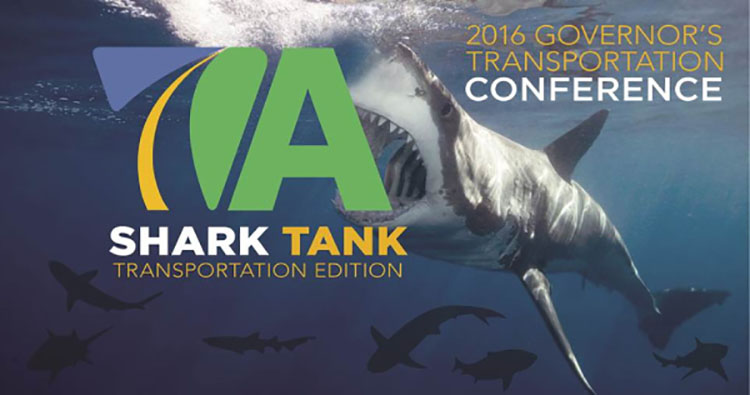Richmond, VA (November 7, 2016)– Two 2014 VCU biomedical engineering (BME) alumni climbed into the Shark Tank at the Commonwealth’s 2016 Governor's Transportation Conference on Oct. 20. They climbed out with $4,000 for a new app that helps people who are visually impaired cross safely at crosswalks.
David Parker, currently an M.S. student in VCU Engineering’s Pawluk Lab, teamed with Ross Petrella, now a Ph.D. candidate at Old Dominion University, to develop a smartphone app that gives pedestrians who are visually impaired better information about when it is safe to cross the street. Called App-A-Light, their innovation represents an improvement over the current audible safe-crossing signals currently used at approximately 3,000 Virginia Department of Transportation crosswalks.
“My mother is an engineer with VDOT,” Petrella said. “The problems they were having with audible crosswalk signals came up in conversation with her shortly before I heard about this conference.”
“The biggest issue with the current ‘clicking’ technology is that it distracts people from listening for traffic noises,” Parker said.
Parker and Petrella worked with the Virginia Department for the Blind and Visually Impaired to create an app that virtually pushes the crosswalk button, and then gives three kinds of feedback indicating when it is safe to cross.
For low-vision users, the app displays a high-contrast red color on the screen when it is safe to cross. The color changes to give a 15-second alert, and again to give a 5-second warning. For pedestrians who are blind, the app emits either a sound or a vibration when it is safe to cross, with a different sound or vibration occurring at 15-second and 5-second warning intervals. It also gives information about irregularities such as medians and lets the user know if he or she starts to veer.
They spent about six weeks building the app. Once it was designed, they rehearsed their three-minute presentation.
“We practiced with the ‘mini sharks’ from the Pawluk Lab. The students and Dr. Pawluk really grilled us, so by the time we got to the conference we were ready,” Parker said.
The one question that they did not have an answer for became an opportunity to focus on the app’s additional uses.
“One of the sharks asked how many blind people were in Virginia. We didn’t know, so we pointed out that App-A-Light is not just for the visually impaired. We said that it’s also useful to runners and to people with other physical disabilities because it’s hands-free,” Petrella said.
The sharks, who came from industry and government, gave App-A-Light $4,000, the highest award given to any of this year’s presenters.
The funds will help Parker and Petrella purchase different kinds of testing phones and tablets and pay test subjects. When the app is fully developed, they think VDOT would be able to make each of its 3,000 audible crossing signals App-A-Light-ready for $100 apiece. Response from the conference makes the team optimistic.
“When we got off the stage, we were about 30 seconds into shock,” said Parker. “Then engineers from VDOT started coming up to talk to us about it. There were lots of congratulations.”
